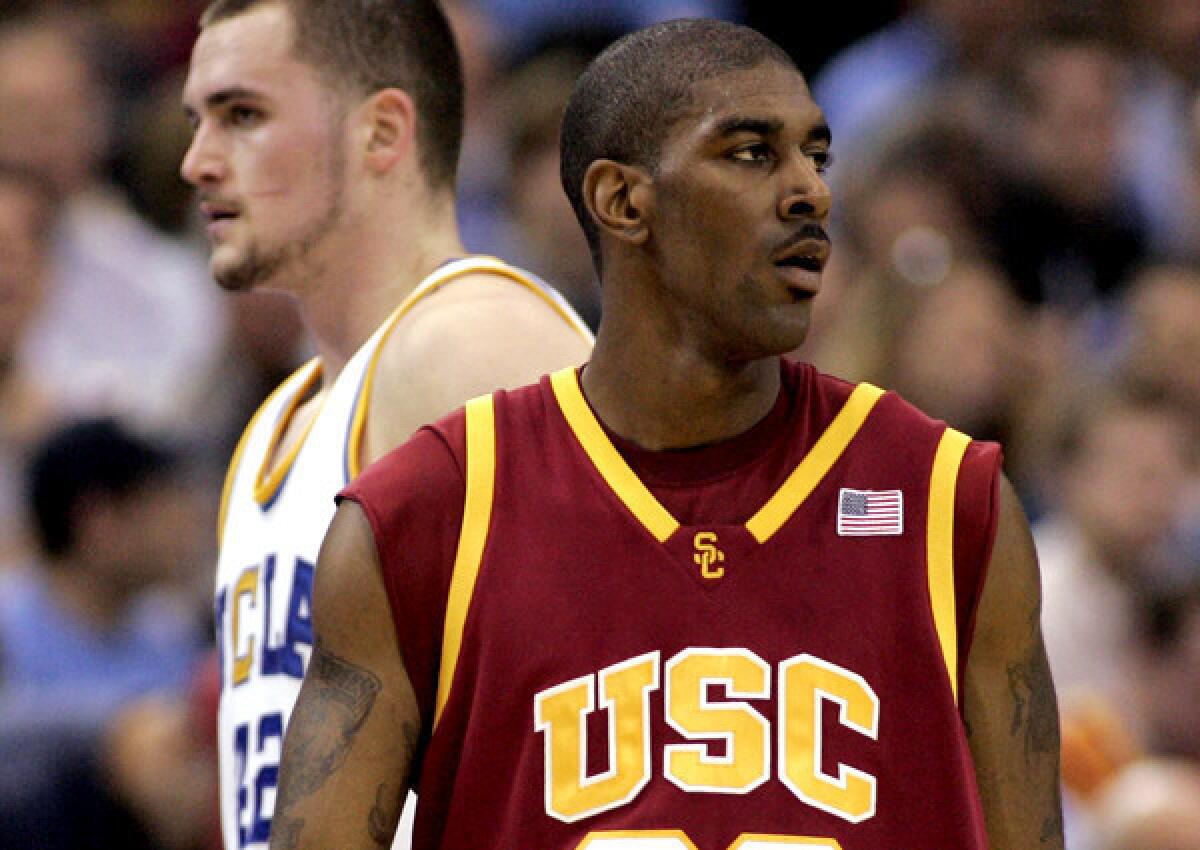Repairing NCAA’s ‘one-and-done’ issue

- Share via
When the conversation turns to college players leaving for the NBA after just one season, Ben Howland grimaces.
The UCLA coach has lost two players this way — including Kevin Love — and expects his current star freshman, Shabazz Muhammad, will jump to the pros this summer.
“We’re playing by NBA rules here,” he said. “These are not rules governed by the NCAA or the universities.”
The NBA requires that potential draftees be at least 19 and one year removed from high school. This theoretically prompts more high school stars to make a brief stopover in college, going “one-and-done.”
The trend worries college coaches, giving rise to various ideas about how reverse it.
At Texas El Paso, Tim Floyd believes the NCAA should fight back by allowing players to enter the draft without renouncing their eligibility. That way, if a player is chosen outside of the coveted top 15 picks, or even the first round, he can return to school.
Floyd coached one-and-done stars O.J. Mayo and DeMar DeRozan at USC. He also saw freshman Davon Jefferson go undrafted.
“A guy could get drafted three times,” Floyd said of his proposal. “It would force the NBA to evaluate every single player at the college level, and they don’t want to do that.”
The tactic might also get players mixed up with agents, but those ties are already embedded in the sport at the youth level. Floyd thinks a bold move is required to force the NBA and its players’ association to agree on language in the collective bargaining agreement that would raise the minimum draft age.
“Right now,” he said, “all the cards are in the NBA’s hands.”
Howland sees it differently. He wants intervention from a higher power.
“You have to get the government involved,” he said. “It has got to become a congressional issue where we make a law.”
Beyond that, the UCLA coach sees a larger transformation looming ahead.
Former Bruins star Ed O’Bannon is spearheading an antitrust lawsuit against the NCAA, contesting the organization’s right to profit from the names, images and likenesses of players who have long since left college. If the suit prevails, it could have far-reaching effects on how college sports are governed and operated.
“It’s going to change,” Howland said. “It has to change.”
But not everyone in college basketball is convinced that one-and-done is ruining the game. Some insist it affects a relatively small number of schools and players.
Fran Fraschilla, a former coach turned television analyst, points instead to the fickle nature of talent.
“There is a cycle every so often that produces three or four truly great college players in a given year,” he said. “I think we’ve just hit a low point in the cycle and I saw that coming. There’s just not a transcendent Kevin Durant-type player.”
Either way, sports law experts expect the college game to find a way through.
“We’ve watched these rules move and shift over the years,” said Steve Morgan, a former NCAA executive who now represents schools as an attorney for Bond Schoeneck & King. “It does seem like there is something you could try that would be better than the current circumstances.”
twitter.com/LATimesWharton
More to Read
Go beyond the scoreboard
Get the latest on L.A.'s teams in the daily Sports Report newsletter.
You may occasionally receive promotional content from the Los Angeles Times.











